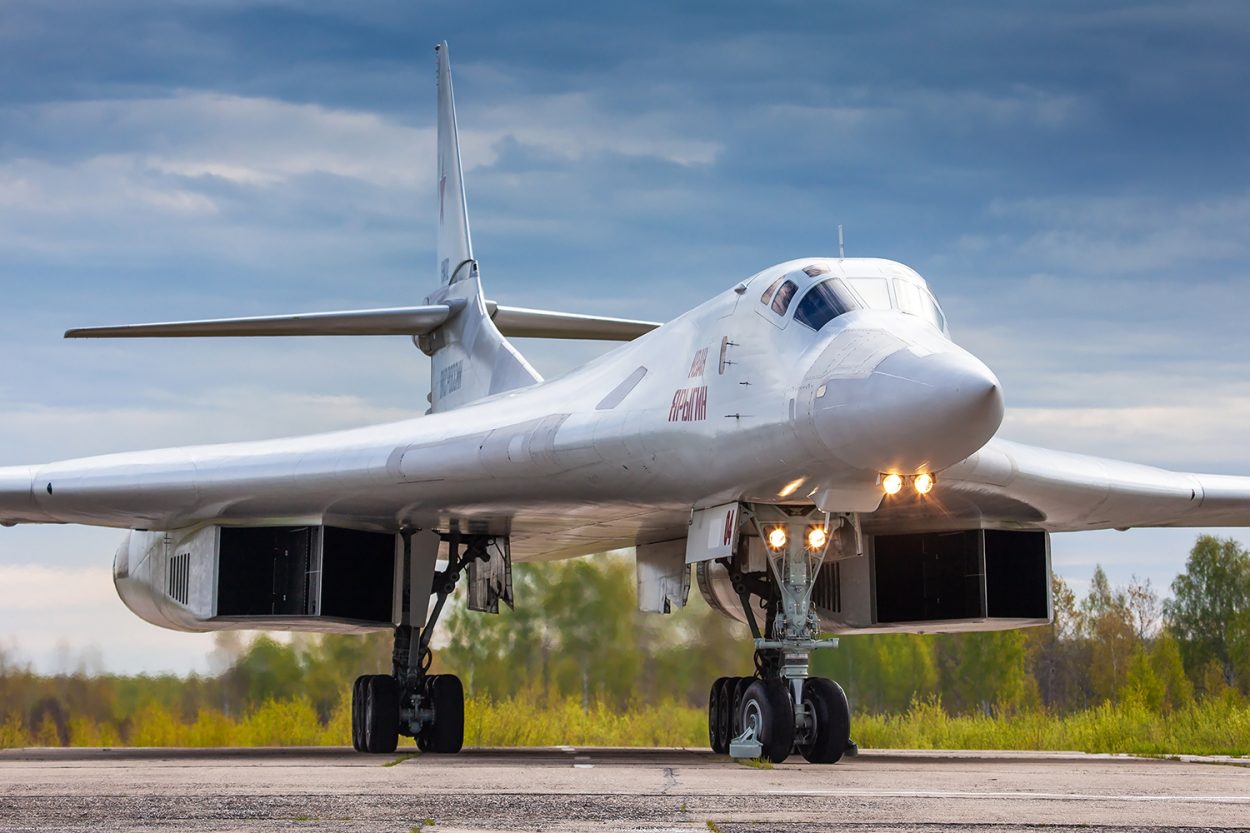The United Aircraft Corporation, the parent company of Tupolev and the Kazan Aircraft Plant, has announced the completion of extensive upgrades to three key workshops crucial for the production of Tu-160M bombers.
The Kazan Aircraft Plant is Russia’s sole producer of Tu-160M bombers and also modernizes Tu-22M3 and Tu-160 aircraft.
The recent upgrades, which encompass preproduction, mechanical assembly, and flight test centers, mark a significant milestone in bolstering Russia’s defense capabilities.
The modernization initiative, spearheaded by the military-industrial organization KazGAP, was reportedly part of a broader state program aimed at bolstering the country’s defense industry. The efforts began in 2016 with an investment of approximately 30 billion rubles (U.S. $340 million).
Originally slated for completion in 2020, the modernization program faced delays due to legal challenges, including numerous criminal cases against Kazan subcontractors for fraud and embezzlement.

Despite setbacks, the project’s scope and funding remained intact, with subcontractors assuming additional financial responsibilities to uphold commitments.
Meanwhile, under a 2018 contract with the Russian Defence Ministry, Kazan Aircraft Plant is on track to deliver 10 new Tu-160M bombers by 2027, having already supplied three.
Following financial reorganization in 2019, which saw KazGAP acquired by holding company Technodinamika, a subsidiary of the state-owned Rostec corporation, the plant’s modernization efforts gained momentum.
Nine facilities, including crucial aggregate and final assembly workshops, have secured certifications, paving the way for increased operational efficiency.
United Aircraft Corporation reports substantial progress, with construction nearing completion on heat treatment and coating facilities, now at 86% readiness. Moreover, the Kazan Aircraft Plant anticipates wrapping up all modernization efforts by the end of this year.
Why Is Russia Fastening Production Of Tu-160M?
Amid the ongoing war with Ukraine, Russia has intensified efforts to boost the production and enhancement of its Tu-160M nuclear bombers. Previous attacks on Russian air bases, such as Engels and Dyagilevo — key facilities housing strategic bombers — underscore the critical role of these aircraft in ongoing military operations.
The Tu-160M, a modernized variant of the iconic Tu-160 Blackjack strategic bomber, has become a centerpiece of Russia’s military strategy.
Earlier this year, Russian President Vladimir Putin himself flew aboard one of these upgraded bombers, highlighting their significance in the nation’s defense posture.

Originally introduced during the Soviet era, the Tu-160 had a turbulent history. Many of its fleet ended up in Ukraine following the dissolution of the Soviet Union. Russia has since reclaimed and refurbished approximately 17 of these bombers to bolster its operational capacity.
After ceasing full-scale production around 1995, Russia renewed its effort in 2015 to revive production, focusing on the upgraded Tu-160M variant. The decision was driven in part by delays in the development of the PAK DA new-generation bomber program.
In January 2018, Russia placed an order for 10 new Tu-160Ms, each costing approximately $270 million, with plans for the first delivery by 2021. Despite earlier ambitions to acquire at least 50 new-built Tu-160M aircraft, no further orders have been confirmed since then.
Reviving production of the Tu-160M has presented formidable challenges, exacerbated by the complexities of wartime logistics and resource allocation. Even before the invasion of Ukraine, reinstating production infrastructure — including specialized jigs and tooling — proved daunting, with many components no longer readily available.
The ongoing conflict has further strained these efforts, redirecting financial and technological resources towards immediate military needs. Russia has also faced significant hurdles in sourcing high-technology components from international suppliers, complicating efforts to maintain production momentum.
Despite these challenges, Russia is committed to enhancing its strategic bomber fleet. The Tu-160M’s advanced capabilities, including upgraded avionics and weaponry, position it as a critical asset in Russia’s military arsenal.
The Tu-160M features a completely revamped mission system and avionics, which includes a new radar, digital cockpit displays, a flight control system, navigation equipment, and a communication suite. Additionally, it has an updated self-protection suite.
One of the major challenges in resuming production of this aircraft was the need for new engines. The original Kuznetsov NK-32 turbofan, known as the most powerful combat aircraft engine globally, had been out of production for some time.
The modernized and supposedly more efficient NK-32-02 engine was specifically developed for the Tu-160M and started flight testing in November 2020.
- Contact the author at ashishmichel(at)gmail.com
- Follow EurAsian Times on Google News




